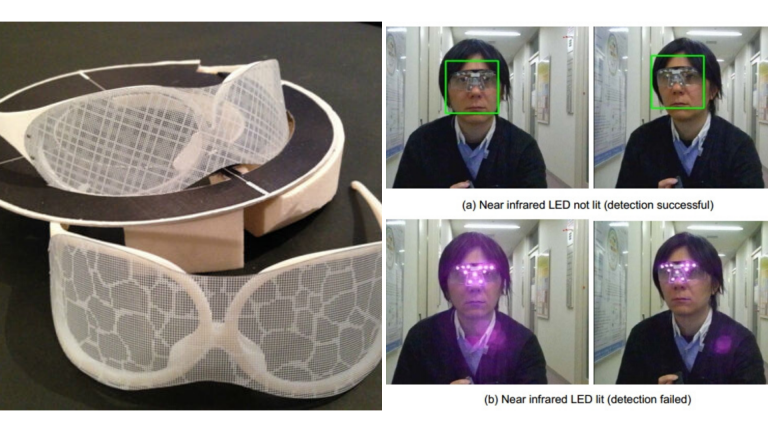
How to Hide From AI
You have the right to remain silent, but can you? It's a game of "Hide and Seek" with AI.
by Vyara Stefcheva
Updated
“
What is worse than a wall separating you from all the riches of the vast information flow? Becoming part of the flow.
Often, the media likes to mystify the mechanism of deep fake creation, brain-computer interface development, and facial recognition probably because of the futuristic nature of these technologies.
But modern problems require modern solutions, which causes high technology solutions to accelerate their pace of development. With the rise of Artificial Intelligence, Machine Learning and the Internet of Things, it's hard to catch up with all innovations. / FYI: Use DeepIndex for help.
As humankind gets smarter digital intelligence significantly improves too. Now *we* have to find a way to outsmart *our* creations. We teach them to detect, identify and analyze us. We started a fun small game of "Hide and Seek" with them and now it's our turn to hide.
While it would be crazy to completely dispel the threat of monitoring and public manipulation, there's progress worth mentioning in terms of deep fake recognizing and security. Today we are taking a look at anti-surveillance techniques.
When anonymity is a key priority
Allow us to tell you about an art project with a different outlook. In 2017, five product design students - Marcel Coufreur, Sanne Weekers, Joppe Besseling, Jip van Leeuwenstein, and Jing-cai Liu designed conceptual products battling with face-recognition and public surveillance.
Their visionary thought was applicable in a dark future scenario where anonymity is a key priority - sounds familiar, right? The products were Wearable Face Projector, Anonymity Scarf, Anti-Drone Canon, Faraday Backpack, Privacy Mask, and Dazzle coat.
However, their student's presentation video went viral because of a fake news tweet saying the Wearable Face Projector product was real and used in Honk Kong protests by protesters who wanted to remain anonymous. The creators of the project were quick to write a statement declining the obligations and giving more clear backstory about the project.
But it doesn't stop there, one of these students came up with another brilliant idea!
Jip van Leeuwenstein is a futuristic creator with a unique vision. A brief background check says that he's studied Product Design, took part in different Expositions in Netherland, USA, and Italy.
One of his other creations is mask formed like a lens that keeps you away from unwanted face recognition system without hiding your real facial expressions. Jip works on a lot of other interesting projects such as robots using Micro Fuel Cells for transforming insects into electricity so we suggest we check his website.
Consider privacy visors
A professor at the National Institute of Informatics in Tokyo created a "privacy visor" with infrared LED lights which stops software from detecting a person. Tsuyoshi Ando then made a second "offline" version of the Privacy Visor without power supply.
The devices were part of a much bigger research aiming to establish content security technologies for privacy and also included "Technology to prevent unauthorized copying of screens and displays", "Fingerprinting technologies for anonymizing data", and Information Hiding and Anonymizing Techniques. Read Ando's full research here.


Privacy-enhancing technologies for resolving trade-offs between data anonymity and utility by Prof. Tsuyoshi Ando
Today's Leads of the Awakening: Adam Harvey
The plague of our new generation is called "Online" and we are desperately seeking our messiah who will give an end to our social media contagion. We suffer from blindness and intoxication and someone has to wake us up, as fast as possible. One of these people is Adam Harvey.
Adam Harvey is a researcher and artist based in Berlin, a New York University graduate. He is keen on topics like "Future of Technology", "Computer Science" and "Surveillance and Counter Surveillance". His projects are prior to our society and safety. Meet AhProjects - Harvey's portfolio of designs, ideas, and prototypes of counter-surveillance projects.
Military Camouflage? No thanks, I prefer "CV Dazzle"
Simply put, CV Dazzle is a low-cost camouflage solution from computer vision algorithms that alters the dark and light areas of a face. CV Dazzle is working with the highly popular Viola-Jones face detection algorithm. If you want to camouflage-DIY a piece of clothing you can learn more about the usage of Universal Physical Camouflage Attack (UPC) here.
HyperFace
HyperFace presents an upgraded combination of camouflage patterns that fools computer vision into recognizing a fake face. The concept is based on the algorithmic's perception of a human face, alters the surrounding area and works for specific algorithms.
Hyperface: a fabric that makes computer vision systems see faces everywhere https://t.co/QLXeG6wqtdpic.twitter.com/3BieIOHule
— Boing Boing (@BoingBoing) January 4, 2017
Think of it like this: The algorithm is looking for the highest confidence facial region (the "largest face") and he's finding the fake one instead of your pretty face.
The project is a is an extension of CV Dazzle and is done in collaboration with Hyphen Labs members Ashley Baccus-Clark, Carmen Aguilar y Wedge, Ece Tankal, Nitzan Bartov, and JB Rubinovitz.
VFRAME
VFRAME (Visual Forensics and Metadata Extraction) is a new approach for research on human rights. Its creator describes it as "collection of open-source computer vision software tools designed specifically for human rights investigations that rely on large datasets of visual media".
VFrame
— Prosthetic Knowledge (@prostheticknowl) June 15, 2018
Project from @adamhrv creates tools using Machine Learning for human rights researchers and investigative journalists - the video below demonstrates visual recognition of munition and shellshttps://t.co/qxQsybw2NUpic.twitter.com/DZRGgkiHLU
A lot of new visual research tools amaze us with their potential, such as fast video analysis and recognition within a single scene.
One of the latest projects in VFRAME revolves around development of Synthetic Data - built of synthetic training datasets for objects in conflict zones with the help of 3D modeled scenes.
Current Location: In a Silicon Valley's pool
If you want to hide from the world where you are Data Pools can falsely relocate your phone to Silicon Valley. As said the device "uses SkyLift device to mimic the Wi-Fi network infrastructure at 12 of the top Silicon Valley CEOs causing your phone to show up, approximately, at their pool". Isn't that cool?
Phone Case To Kill Your Phone (Not Literally)
You probably know how faraday cage works - OFF Pocket is the same solution but for your phone. If you need to get off the radar the case will block all wireless signals (700MHz - 5GHz). Or As Adam says: "In Privacy We Trust".
How ethical is surveillance?
We have to give the deserved recognition to Harvey at least one more time - for MegaPixels where he works with Jules LaPlace. The project combines art and research in terms of analyzing a person's privacy and spreading awareness about ethics in surveillance.
The creators help people reach six face and person recognition datasets, learn more about the information's origin and so on. Since the start of the project three of the datasets were quietly deleted by their authors: "Brainwash" (Research from Stanford University), "Duke MTMC" (Multi-Target, Multi-Camera at Duke University's campus), and "MS Celeb" (Microsoft Celeb).
"UCCS" (UnConstrained College Students) dataset was temporarily deactivated. However "The Oxford Town Centre dataset" is still on, showing footage of over 2000 pedestrians, as well as the huge "MegaFace" dataset for commercial face recognition vendors. Wanna know what's going to happen with this information for now on and how it was (probably) used? Follow MegaPixels.
"MegaPixels is an art and research project investigating the ethics, origins, and individual privacy implications of face recognition datasets created in the wild".
— @yhancik@octodon.social on the fediverse (@yhancik) April 20, 2019
by Adam Harvey (CV Dazzle)https://t.co/47RKDLZmU7pic.twitter.com/HUlbwSkLUf
DeepPrivacy
And last but not least we present to you "DeepPrivacy" - a generative adversarial network for face anonymization. The system identifies privacy-sensitive areas with state-of-the-art detection methods and changes it for you, making it impossible to match your identity. Read the official paper from Haakon Hukkelaas, Rudolf Mester and Frank Lindseth here.


github/hukkelas/DeepPrivacy
Is It Possible To Delete Myself From The Internet
The short (honest) answer to this question is "No". If you've been active online for the past few years, then you can't reach or even imagine all the data collections which you're part of without knowing. Sure enough, there are a few ways to delete some of your data but if you think it would be an easy job *SPOILER ALERT*: it's not.
You may also want to read part two of this article - Fashion of The Future: Anti-surveillance Clothing
More OMG

From 386 lbs to a body builder - the amazing story of Krista Francis
From 386 lbs to a body builder - the amazing story of Krista Francis.

Your Dog Can Smell the Passage of Time - Here's How
We've heard of drug sniffers and bomb sniffers, but time sniffers? That's new.

Inside the Thriving Internet Community that Mutilates Furbies
Since the 1990s, the Furby fandom has taken an unlikely (and highly unusual) form.

Why 'Cheese Board Influencers' Became a Thing
Cheese board influencers have taken Instagram by storm, leaving the rest of us to wonder ".

Buying Clout - The Speculators Buying and Selling Social Media Pages
Some users are involved in buying, inflating, and then selling big social media accounts, these Instagram 'flippers' might be a lot more common than you think.